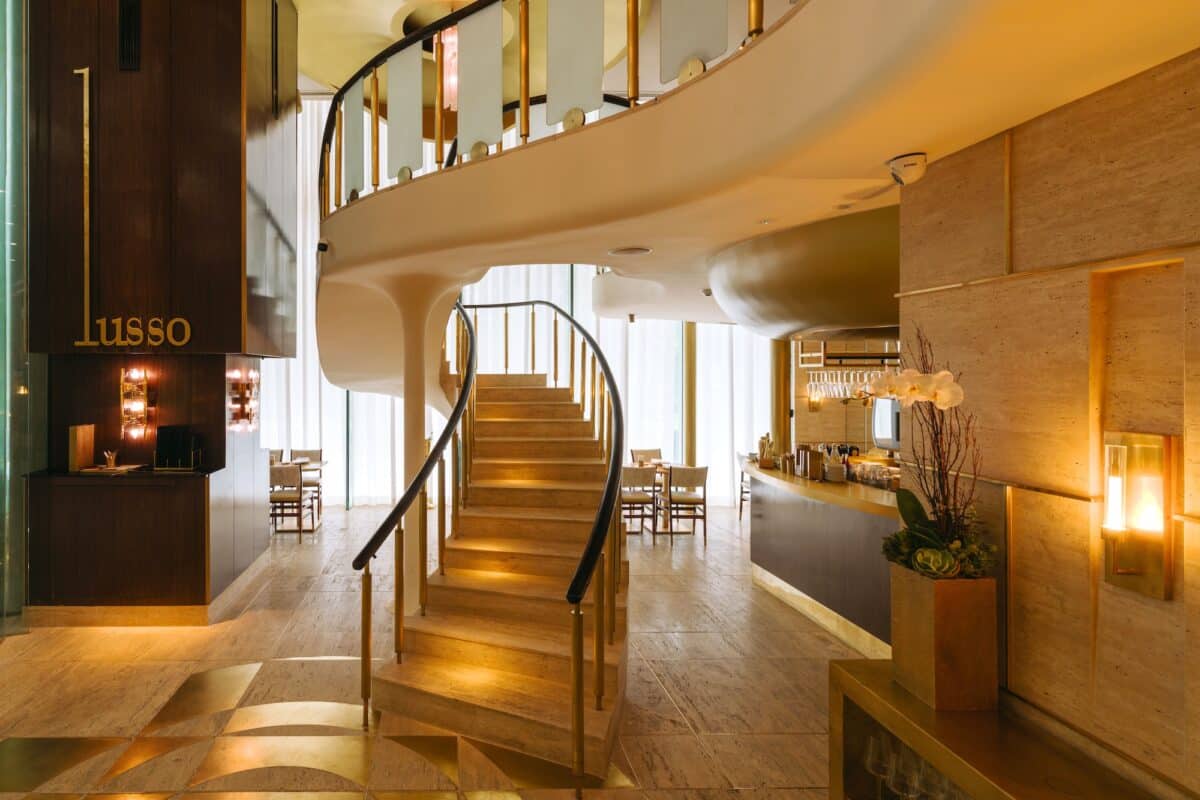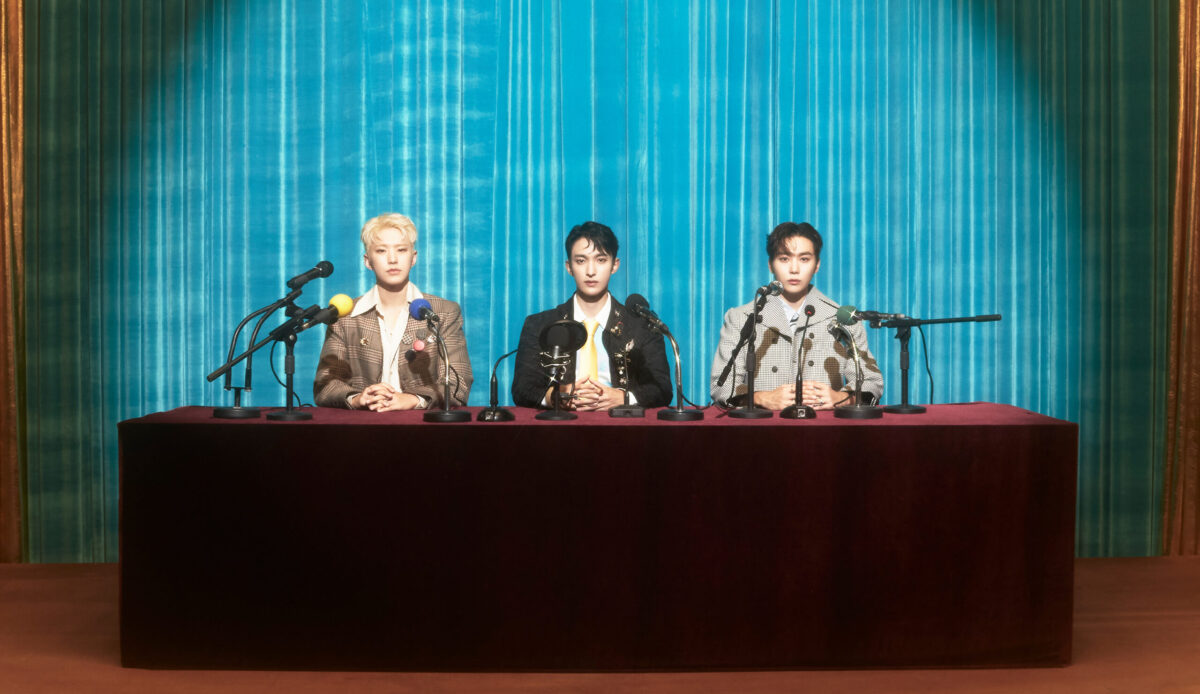

When Budji Layug was tasked for the second time this year to design the creative showcase of Manila FAME, he was clear about his goals: to push the “Design Philippines” brand and to mentor new designers.
A pillar of Philippine home design, Layug brought together companies which he believed had “capabilities of doing design at a global level.”
A platform for Philippine craftsmanship and design for the world market, the Center for International Trade and Expositions and Missions (Citem)-led biannual event drew foreign buyers to the SMX Convention Center on its four-day 58th edition. It ended Sunday. Citem is the exports marketing arm of the Department of Trade and Industry.
“I think that this is the beginning of mentoring new designers, to expose them, to have a hands-on experience with manufacturers, and to fast-track their creativity,” Layug said.
Through Citem’s Design for Exports Program, Layug tapped 15 young and new designers to collaborate with SMEs (small and medium enterprises) and their in-house designers for unique products that were showcased at Manila FAME.
“I made sure everything that comes to the floor is fresh, no repeats,” said Layug, who also headed the creative team at Manila FAME last March. “It was difficult and a big challenge; that’s why I say I used not just a magic wand, but a magic whip.”
Among the fresh names were Leeroy New, Heima, Lilianna Manahan, Buensalido Architects, and Layug’s son David, among others.
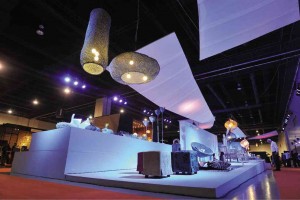
The selection was notably less of merely ornamental pieces, and more of highly utilitarian furniture and decor. That’s not to say, however, that the pieces weren’t striking.
Multimedia artist
At the main Design Philippines booth by the entrance, a massive skeletal-like wall piece made of corrugated fiberboard by Leeroy New dominated the area. On a table beneath it was a bowl of intertwined metal wire, also by the multimedia artist, and which mimicked New’s lamps that were hanging at the opposite panel.
David Layug’s backlit sculptural wall art also made for an arresting counterpoint to Rene Alcala’s mother-of-pearl-inlaid console table below it. The wall art follows the same abstract lines of the young man’s hanging lamp.
On the other side of the hall, the young designer Lilianna Manahan shyly answered queries about her works, a set of metal nesting tables and pastel-colored tableware, including a quirky toy.
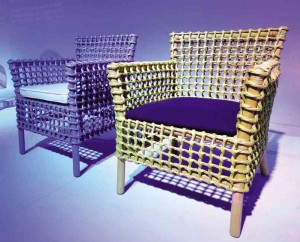
Layug himself designed several pieces for various companies.
“I am no longer aiming for new markets; I’m doing these just for myself,” said Layug, who’s kept busy by projects for resorts, hotels and private residences. “What I want is a fresh approach to new markets, and I want to push the branding of ‘Design Philippines,’ which we started in Milan. I want to create the image that we have brands, lifestyle brands.”
Layug worked closely with his architect-partner Royal Pineda for the home furnishings and furniture showcase on the ground floor, and with Kenneth Cobonpue, the furniture designer whose name is now a global brand.
Layug gives credit to Citem executive director Rosvi Gaetos for helping define the concept of “Design Philippines.”
“The goal is to find the true character of Philippine design, to be able to identify and shape what Philippine design, artistry and craft is,” he said. “This time it’s about what we feel as a people, how we feel as a people now. It’s not about getting inspired by what has come to pass, but to bring about the Filipino-ness of the young design eye.”
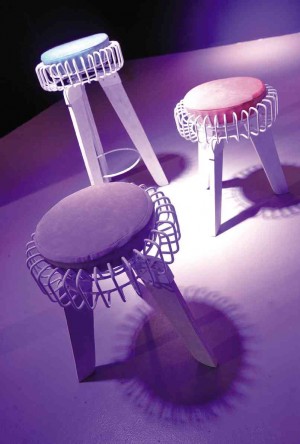
“The Design for Exports Program fortifies our efforts to position the Philippines, through the country brand Design Philippines, as the purveyor of high-caliber and design-forward products crafted in the Philippines, for the world,” Gaetos said in a statement. “The Filipinos’ inventive portrayal of the country’s rich culture speaks a lot about the level of craftsmanship in the Philippines.”
Ahead of the times
Layug said that while the Philippines creates products for specific markets, their efforts also aim to advance the idea that “Design Philippines” is for a global market. “We’re not creating styles for the American or European markets; we are creating our styles to present to them, for them to understand who we are. We’re advanced in terms of ideas and this is really our strength. We’re ahead of the times.”
He said imitation will always be a problem, but he sees China as competition only in terms of pricing. “If your design is unusual, it’s very difficult for them to copy, so it’s no problem. We have to make the market understand that what we’re offering is original.”
However, Layug doesn’t believe that lowering price points is key to being competitive in the global marketplace. “If you design something good,” he said, “you find a niche market, you don’t have to compromise in terms of prices. If you compromise because of price, it affects creativity. It will kill creativity.”

He advises upstarts to understand their strength as designers and try to create a story for their intended market.
He also said that the formerly western-centric Filipino designers and manufacturers would soon be making their products available locally and elsewhere, as they’re feeling the effects of the slower economy of North America. The United States is traditionally the biggest buyer for Filipino furniture and crafts.
“We have to be open to sell to the local market because the western economy is in a crisis,” he said. “We have to open our approach to marketing and distribution.
“The bigger market is actually the west. But what I’m saying is, the whole world is now the marketplace. There are emerging markets like South America and China, and Europe will continue to be there. And if you put them altogether, it’s even bigger.
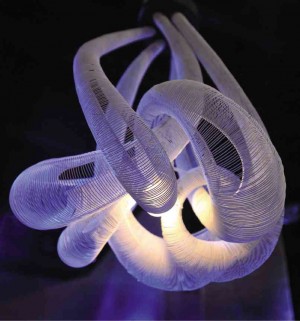
“We have to open our designs to retail, too. Manufacturers and designers are now beginning to understand. If you’re not open to selling to the local market, you’re limiting yourself. To sustain yourself, you have to sell retail, in which case you will get a bigger profit anyway.”
Asked what he thought of the news of American home furnishing brand Pottery Barn’s entry into the Philippines, and the longtime rumor of Ikea coming in, Layug said, “It shouldn’t be a problem. If international brands are coming in, our own companies should also brand themselves.”
The challenge, he added, is “to bring everybody to the standard of quality and sophistication.”
“This is just the beginning,” Layug said. “Hopefully the reputation of the Filipinos’ creativity will become more evident. It will have to be a long-term commitment to product development.”
Manila Wear
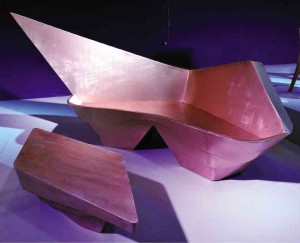
The scene was also vibrant at Manila Wear on the second level of SMX. Manila Wear, the fashion and accessories arm of Manila FAME, which is on its second year, was curated by Josie Natori with visual artist Jinggoy Buensuceso and Philippine-based Japanese designer Wataru Sakuma.
Among the exhibitors were Dennis Lustico (day and evening bags), Joel Escober (jewelry), Joyce Makitalo (jewelry), Arnel Papa (jewelry), Carissa Cruz-Evangelista (jewelry and evening bags), Amina Alunan (evening bags), Lally Cruz-Dizon (crocodile bags and belts), Jun Artajo (apparel and accessories), Jinggoy Buensuceso (jewelry), JC Buendia (apparel), Betina Ocampo (T-shirts), Hindy Weber-Tantoco (accessories) and Natalya Lagdameo (jewelry).






